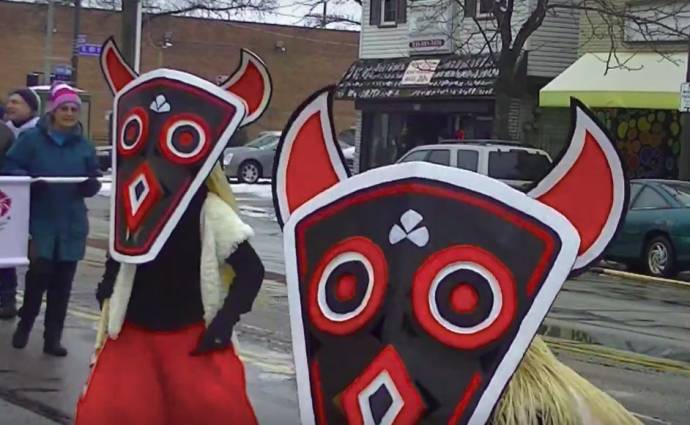February 12, 2018
Slovenes started moving to Cleveland in the late 19th century, going to the US in three main waves, 1890-1914, 1919-24, and 1949-60. These immigrants came in such numbers that the city had the largest Slovene population in the US until the last decade of the 20th century, drawn by the opportunities for work and a better life as industry boomed in the area (and perhaps also by the high density of trees within Cleveland, once known as “The Forest City”).
Like other such populations, the Slovenes in Cleveland stuck together out of habit and necessity, forming their own networks of social support and mutual aid. The immigrants and their descendants thus preserved and promoted Slovene culture, both directly and indirectly, with their food, music, religion and other traditions, with enough enthusiasm to support a Slovene-language newspaper, the Ameriska Domovina, from 1919 to 2008. All of this sets the background for something otherwise quite unexpected, a full on kurentovanje in the streets of America, as seen in these videos (and with more to enjoy on the related Facebook page).
The website Cool Cleveland did a piece on the festival, and an interview with the organiser, Nicole Kusold-Matheou, who notes that “given the fact that we live in a city with amongst one of the harshest winters in the nation, people really get behind the idea of chasing winters away to make room for spring, which is what the Kurents do”.
The events in Cleveland ran from February 5 to 10, with a formal dinner, an exhibition Contributions to Society by Slovenian Women, held at the Slovenian Museum and Archives, and then a weekend of music, food, beer and parades, with more details and images here.






